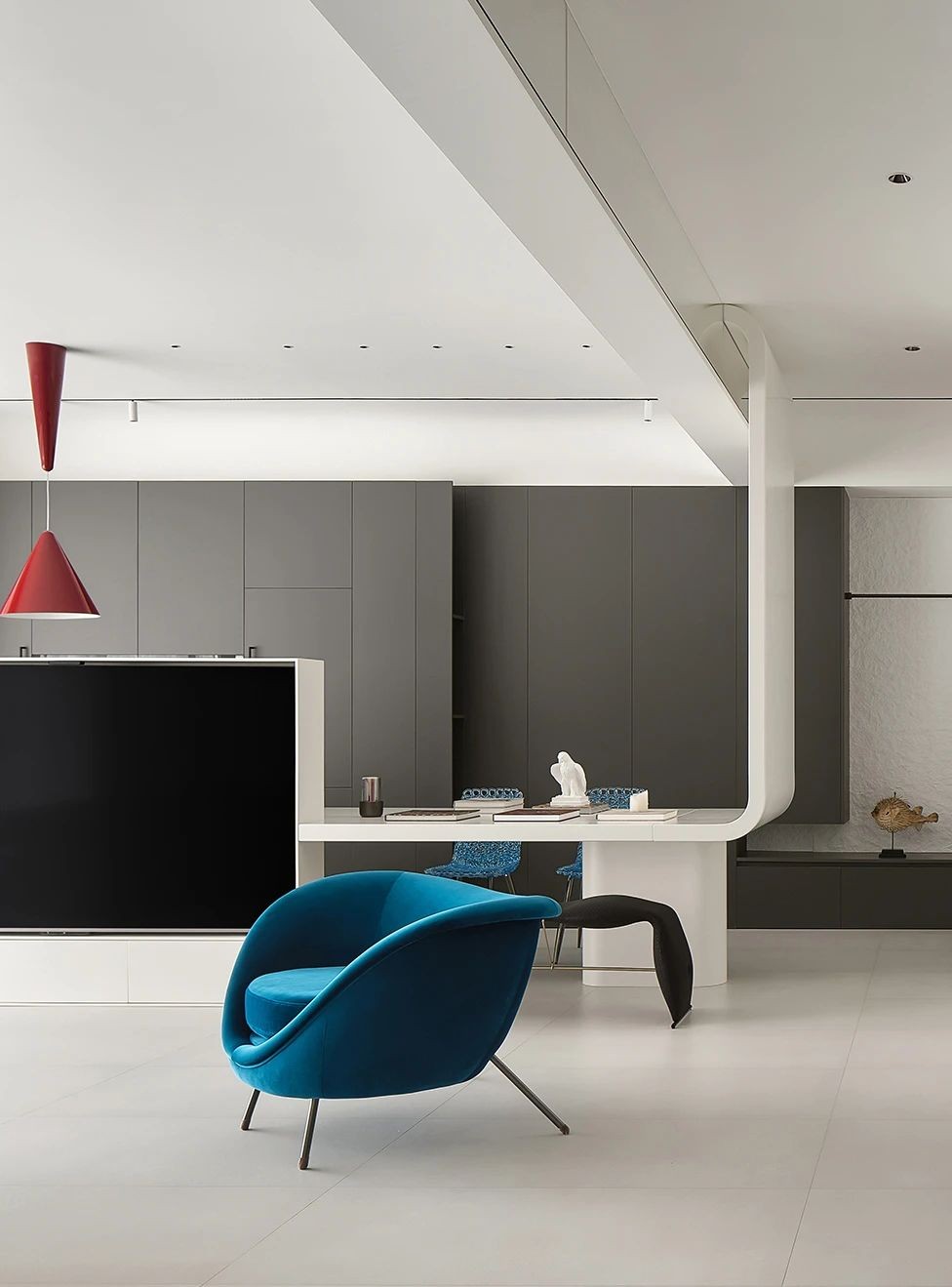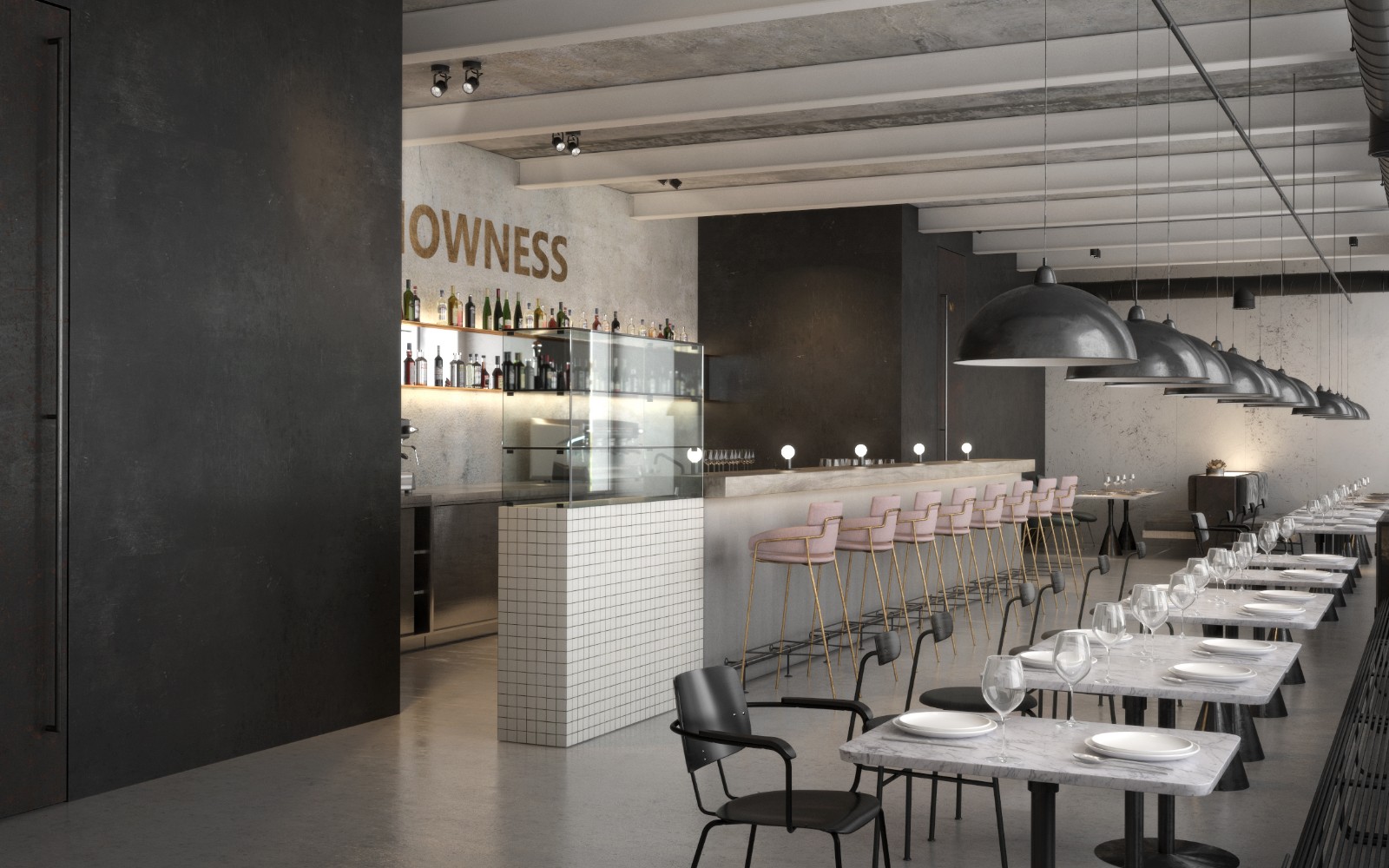Lotus Multifunctional Complex SPEECH
2016-02-10 03:00
© Alexey Naroditskiy
亚历克西·纳罗迪斯基


架构师提供的文本描述。位于莫斯科奥德斯卡亚街和Nakhimovsky展望角的莲花商业中心是整个周边地区的建筑特色。从Nakhimovsky展望地铁站步行5分钟,拐角处将有三栋21层的办公楼,与一层共用的一层楼相连,内有购物中心、餐厅和银行。该综合体还包括一个四层地下停车场。
Text description provided by the architects. The Lotus Business Center built on the corner of Odesskaya Street and Nakhimovsky Prospect in Moscow serves as an architectural accent for the entire surrounding area. A five-minute walk from Nakhimovsky Prospect Metro Station, the corner is home to the three 21-story office buildings connected to a shared ground floor housing a shopping center, restaurant and bank. The complex also includes a four-story underground car park.
© Alexey Naroditskiy
亚历克西·纳罗迪斯基


这一建筑设计是基于这样一种理念,即复杂的雕塑是一种有效的雕塑,在这种雕塑中,现代装饰材料强调了塑料的表现力。带有轻微镜面效果的玻璃轮廓-像闪闪发光的盔甲-动态拱形的正面。
This architectural design is based on the idea of the complex being an effective sculpture where plastic expressiveness is emphasized by use of modern finishing materials. Glass with a slight mirror effect outlines—like shining armor—the dynamically arched façades.
First Floor Plan
一层平面图


每座建筑的形状都是梯形的,其较长的一侧是拱形的。就像巨大的螺旋桨叶片一样,建筑物围绕着建筑群的中心旋转,那里有一个天窗,可以让自然光线进入连接的空间,并通过中庭向下延伸至最低的停车层。
Each building is trapezoid in shape, the longer sides of which are arched. Like gigantic propeller blades, the buildings twist around the center of the complex, where there is a skylight that allows natural light to enter the connected space and further down through the atrium that goes down the lowest parking level.
© MR Group
(三)集团


从一起看,这些建筑由一个动态的体积和空间组成,部分类似于漂浮在水面上的半开的花朵。正是这种关联促使客户端将这个高级商务中心命名为Lotus。
Seen together, the buildings comprise a dynamic volumetric and spatial composition that partly resembles a half-opened flower floating on water. It was this association that prompted the client to give this premium-class business center the name Lotus.
© Alexey Naroditskiy
亚历克西·纳罗迪斯基


建筑群独特的表现力和无限旋转的感觉得益于最初的塑料解决方案-除了它在水平平面上的弯曲,建筑物也在垂直投影中转换。每栋建筑的曲线梯形的两个不等短边每两层改变一次几何形状。短边变长,长边变短。
The complex’s unique expressiveness and feeling of endless rotation is achieved thanks to the original plastic solution—in addition to its curvature on the horizontal plane, the buildings transform in vertical projection as well. The two unequal shorter sides of the curvilinear trapezoid of each building change their geometry every two floors. A shorter side gets longer, and a longer side gets shorter.
© MR Group
(三)集团


因此,建筑的一边往前突出在较低的楼层上,另一边则向后延伸。在立面上,这个台阶的特点是突出的正面元素1.35米宽安装在一个角度。玻璃带创造了一种创新的外观结构,类似于鲤鱼皮,并改变了沿弯曲边地板突出部分的深度。
As a result, one side of the building goes forward projecting above the lower floors, and another side goes back. On the façade, this stepped feature is accentuated with façade elements 1.35 meters in width installed at an angle. Glass bands create an innovative façade structure resembling armadillo skin and vary the depth of the protrudent part of floors along the curved sides.


为了保持玻璃外壳的完整性,尽量减少外面可见的金属元素数量。特别注意了玻璃的角元素。为了达到玻璃表面的纯净感,介绍了一种独特的具有金属内部结构的角玻璃。
In order to retain the integrity of a glass shell, the number of metal elements visible outside is minimized. Particular attention was given to the corner elements of the glazing. To achieve the purity of perception of the glassy surface, a unique corner glass pane with inside metal structure was introduced.
建筑群玻璃外壳上的最后一层装饰是用同样的玻璃板安装在棋盘上的上层技术地板。他们给建筑加冕,在天空之间创造了一条不稳定的线,反映在倾斜的外墙上,以及它真正的拱顶上。
The final flourish on the complex’s glass shell was the finishing of the upper technical floor with the same glass plates installed in a chessboard manner. They crown the buildings, creating an unstable line between the sky, reflected in a tilted façade, and its true vault.
© Alexey Naroditskiy
亚历克西·纳罗迪斯基


建筑物的改造也反映在内部。有必要改变现代办公建筑的传统设计方案,包括一个带电梯的中央承重楼梯、一排周边的柱子和没有梁的实心浇筑楼板-没有在同一轴线上安装柱。
The transformation of the buildings is reflected in the interior as well. It was necessary to change the traditional design scheme for modern office buildings that includes a central load-bearing stairway with elevators, a row of columns along the perimeter, and beamless solid cast floor slabs—columns were not installed along one and the same axis.
Standart Floor Offices
标准楼层办公室


在周长变化的地方,柱子向前或向后移动(最大移动为180毫米),因此在它们与窗户之间保留足够的空间来维持承载力和保持开放式规划。弯角的悬臂不超过4米。
At places where the perimeter changes, the columns go forward or back (maximum movement is 180 mm), thus retaining enough space between them and windows to sustain bearing capacity and maintain open planning. Cantilevers in corners do not exceed 4 meters.
© Alexey Naroditskiy
亚历克西·纳罗迪斯基


由于平面梯形边的曲率、端面宽度的变化和立面的台阶修整等三重变形,实现了立体感和空间构形的雕塑质量。站在地面上观看复杂环境的观众几乎不能定义一个垂直常数,并重建一个透视变形系统。
The sculptural quality of the volumetric and spatial composition is achieved due to the triple shape deformation: curvature of the trapezoid sides in plane, changes in width of its ends, and the stepped finishing of the façade. A viewer standing on ground and looking at the complex can barely define a vertical constant and reconstruct a system of perspective deformations.








































Architects SPEECH
Location Odesskaya ul., 2, Moskva, Russia, 117638
Category Offices
Authors Sergei Tchoban, Sergey Kuznetsov, Aleksey Iliyn
Architects in charge A.Borisov, L.Trishkina, G.Chembaeva
Area 152448.0 m2
Project Year 2014
Photographs Alexey Naroditskiy, MR Group
Manufacturers Loading...































